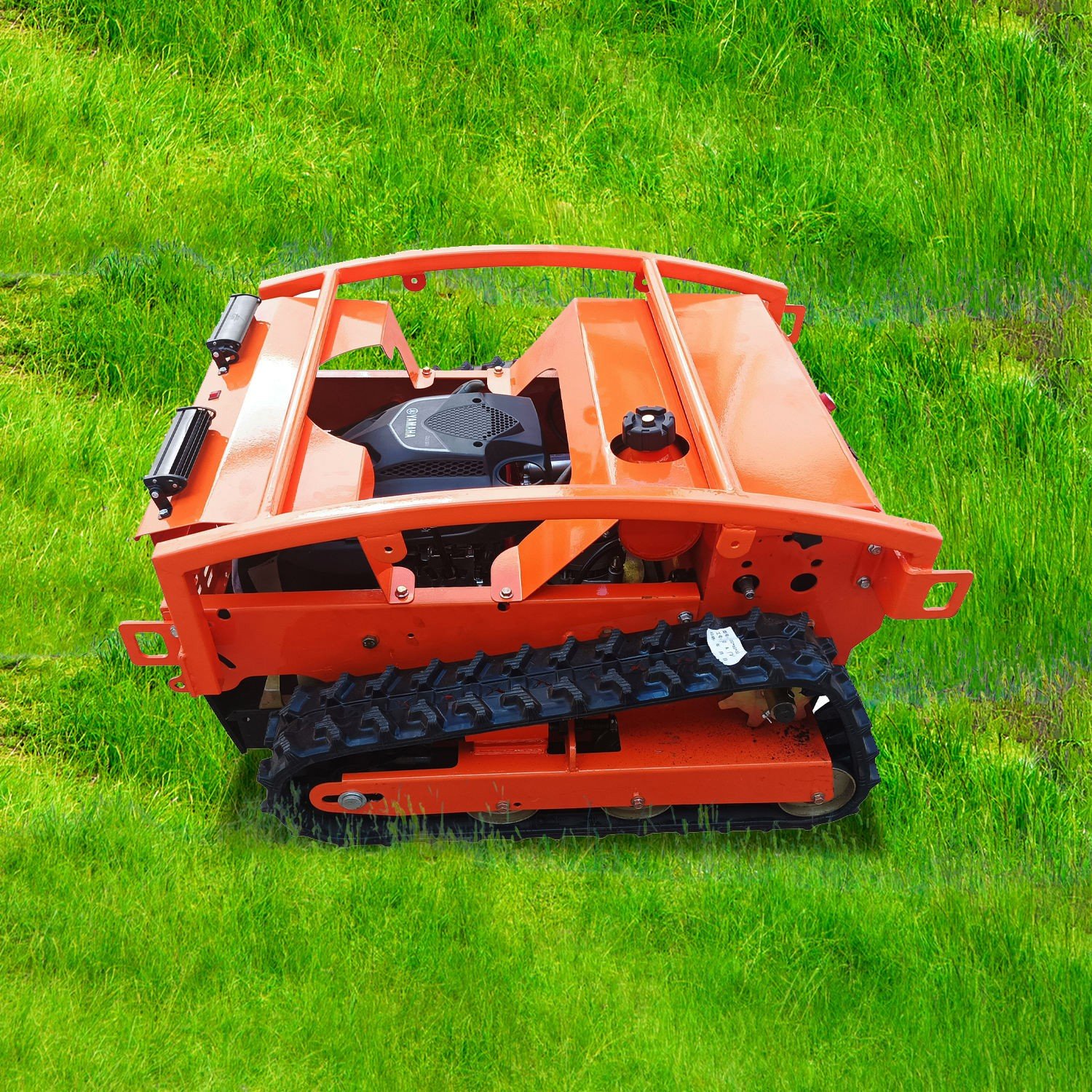

In recent years, remote-controlled agricultural lawn mowers have become increasingly popular in rural areas, becoming a favorite among farmers. With advancements in technology, these machines not only reduce the labor intensity for farmers but also increase work efficiency, making them an indispensable tool in modern agriculture.
The working principle of remote-controlled agricultural lawn mowers is straightforward. Operated via remote control, they can flexibly navigate fields and meadows to perform mowing tasks. Compared to traditional manual lawn mowers, remote-controlled models offer more convenience and efficiency, particularly when dealing with complex terrains. These machines are equipped with powerful engines and durable blades, enabling them to effectively manage various types of grass, even in weed-infested areas. By receiving commands from the remote control, these mowers can easily adjust cutting height, forward speed, and turning angle, ensuring precision and high performance in their operations.
The advantages of remote-controlled agricultural lawn mowers extend beyond their excellent mowing capabilities. Firstly, their use significantly reduces the need for manual labor, allowing farmers to cope with busy agricultural seasons more easily. Traditional mowing methods typically require significant physical effort and time, especially in large fields, where manual operations struggle to ensure efficiency and uniformity. Remote-controlled mowers address this issue, greatly enhancing work efficiency.
Secondly, due to the remote operation, farmers no longer need to physically enter the fields, reducing the risk of exposure to pesticides and insects, thus improving safety. In hot summer weather, prolonged exposure to sunlight while performing physical labor can lead to heatstroke and insect bites. The emergence of remote-controlled mowers allows farmers to complete mowing tasks comfortably from shaded areas, avoiding these potential health risks.
Additionally, the low-noise and low-emission design of remote-controlled mowers aligns with current environmental protection requirements. Traditional mowing equipment usually generates significant noise and exhaust emissions, which not only pollute the environment but also adversely affect farmers' hearing and health. Remote-controlled mowers employ advanced environmental technologies, effectively reducing noise and emissions, making them more friendly to both the environment and human health.
Maintaining these remote-controlled mowers is also quite simple. The key components, such as the blades and power systems, are made from durable materials, reducing the frequency of maintenance and replacements. Farmers only need to perform regular inspections and basic maintenance to ensure long-term stable operation. This not only lowers usage costs but also extends the equipment's lifespan.
With the development of modern agriculture, the market demand for remote-controlled mowers continues to grow. Local governments are actively promoting these new machines by providing purchase subsidies and technical training, helping farmers better master their use. Many farmers have reported that since using remote-controlled mowers, managing their fields has become more effortless and efficient, resulting in increased incomes.
Summary
Remote-controlled agricultural lawn mowers, with their efficiency, convenience, and safety features, are gradually becoming the preferred choice for farmers in rural areas. They significantly reduce labor intensity, improve work efficiency, and enhance operational safety while meeting environmental protection requirements. In the future, these machines are expected to be applied in broader areas, further driving the modernization of agriculture. The widespread use of remote-controlled mowers not only improves the living and working conditions of farmers but also provides strong support for sustainable agricultural development. Through continuous technological innovation and application promotion, remote-controlled mowers will play a crucial role in various agricultural production scenarios, becoming an important asset for modern agricultural development.